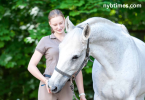Artificial turf has gained popularity in recent years as a low-maintenance alternative to natural grass. There are numerous benefits to choosing artificial turf for your outdoor spaces. Firstly, artificial turf requires minimal upkeep compared to natural grass. With artificial turf, you can say goodbye to mowing, watering, and fertilizing. This not only saves you time and effort but also reduces your water consumption and carbon footprint. Additionally, artificial turf stays green and lush all year round, regardless of weather conditions. It is resistant to drought, extreme temperatures, and heavy foot traffic, making it a durable and long-lasting option for any outdoor area. Finally, artificial turf eliminates the need for harmful pesticides and herbicides, creating a
Different types of artificial turf
When choosing artificial turf, it is essential to consider the different types available to find the one that best suits your needs. One popular type of artificial turf is polyethylene turf. This type of turf has a soft and natural feel, making it ideal for residential areas where comfort is a priority.
Polyethylene turf is also resistant to UV rays, ensuring that it retains its vibrant color even under direct sunlight. Another type of artificial turf is polypropylene turf, which is known for its durability and affordability. Polypropylene turf is commonly used in high-traffic areas such as playgrounds and sports fields, thanks to its ability to withstand heavy use without losing its quality.
Nylon turf is another option to consider. It is the most resilient and durable type of artificial turf available. Nylon turf is perfect for areas with high foot traffic, such as commercial spaces or sports fields. It can withstand constant use without showing signs of wear and tear, making it a long-lasting investment. However, nylon turf is more expensive than other types of artificial turf, so it may not be suitable for everyone’s budget.
Lastly, a popular choice for artificial turf is a combination of polyethylene and polypropylene fibers. This type of turf combines the softness and natural appearance of polyethylene with the durability and affordability of polypropylene. The blend of these two materials provides a well-rounded artificial turf option that is suitable for various applications.
When choosing the type of artificial turf, it is crucial to consider factors such as the intended use, budget, and desired appearance. By understanding the different types of artificial turf available, you can make an informed decision that best suits your needs.
How to choose the right artificial turf for your needs
Choosing the right artificial turf for your needs requires careful consideration of several factors. Firstly, evaluate the intended use of the area where the turf will be installed. Different applications, such as residential lawns, sports fields, or commercial spaces, have specific requirements that need to be met.
For example, a residential lawn may prioritize a soft and natural feel, while a sports field may require a more durable and resilient turf. Consider the foot traffic, activities, and desired aesthetics of the area to determine the appropriate type of artificial turf.
Secondly, consider your budget when selecting artificial turf. The cost of artificial turf can vary depending on factors such as the type of turf, quality, and installation requirements. It is essential to strike a balance between your desired turf quality and your budget limitations. Remember to factor in the long-term savings on maintenance and water consumption that artificial turf offers, as this can offset the initial investment.
Furthermore, take into account the local climate and environmental conditions. Some types of artificial turf are better suited for specific climates, such as those with extreme temperatures or heavy rainfall. Ensure that the chosen artificial turf can withstand the local climate conditions to ensure its longevity and performance.
Lastly, consult with a reputable artificial turf supplier or installer to get expert advice and recommendations. They can provide valuable insights based on their experience and knowledge, helping you make an informed decision. Additionally, they can assist with the installation process and provide guidance on maintenance to ensure the longevity and optimal performance of your artificial turf.
By carefully considering these factors, you can choose the right artificial turf that meets your specific needs and provides a beautiful and functional outdoor space.
The installation process for artificial turf
Installing artificial turf may seem like a daunting task, but with the right guidance and preparation, it can be a straightforward process. Here is a step-by-step guide to help you navigate the installation process:
- Prepare the area: Start by clearing the area of any existing vegetation, rocks, or debris. Ensure that the surface is smooth and level to provide a solid foundation for the artificial turf.
- Install a weed barrier: Lay down a weed barrier fabric to prevent weed growth under the artificial turf. This will help maintain a clean and low-maintenance surface.
- Add a base layer: Depending on the specific requirements of your project, add a base layer of crushed stone or gravel. This layer provides stability and aids in proper drainage.
- Compact the base layer: Use a compactor or roller to compact the base layer. This ensures a firm and even surface for the artificial turf.
- Lay down the artificial turf: Roll out the artificial turf over the prepared area. Ensure that it is aligned correctly and fits snugly against any existing edges or boundaries.
- Trim and shape the turf: Use a utility knife to trim any excess turf and shape the edges according to the desired layout. Take your time to achieve clean and precise cuts.
- Secure the edges: Secure the edges of the artificial turf using landscape staples or nails. This will prevent any shifting or movement of the turf over time.
- Apply infill (optional): Depending on the type of artificial turf chosen, you may need to apply infill material. This helps to support the turf fibers, provide cushioning, and improve drainage.
- Brush and groom the turf: Use a stiff brush or power broom to brush the turf fibers in an upright position. This helps to create a more natural and aesthetically pleasing appearance.
- Water and settle the turf: Lightly water the artificial turf to help settle and secure it in place. This will also help to remove any wrinkles or creases.
Following these steps will ensure a successful installation of artificial turf, providing you with a beautiful and functional outdoor space that requires minimal maintenance.
Maintenance tips for artificial turf
While artificial turf requires less maintenance compared to natural grass, it still requires some care to ensure its longevity and optimal performance. Here are some maintenance tips to keep your artificial turf looking its best:
- Regular brushing: Regularly brush the artificial turf to keep the fibers upright and prevent matting. Use a stiff brush or power broom to gently brush the turf in the opposite direction of foot traffic. This will help maintain a natural and well-groomed appearance.
- Remove debris: Remove any debris, such as leaves, twigs, or pet waste, from the surface of the artificial turf. Use a leaf blower or a rake to sweep away loose debris. This will prevent the buildup of organic matter and keep the turf clean and hygienic.
- Clean spills and stains: Promptly clean any spills or stains on the artificial turf to prevent discoloration or damage. Use a mild detergent mixed with water to gently scrub the affected area. Rinse thoroughly with water to remove any residue.
- Control weed growth: While artificial turf is resistant to weed growth, occasional weed seeds may find their way onto the surface. Regularly inspect the turf for any signs of weeds and remove them promptly. Use a weed killer or herbicide if necessary, following the manufacturer’s instructions.
- Inspect and repair: Regularly inspect the artificial turf for any signs of damage or wear. Look for loose seams, tears, or areas where the turf may have shifted. Repair any damages promptly to prevent further deterioration.
- Proper drainage: Ensure that the drainage system of the artificial turf is functioning correctly. Clear any debris or obstructions that may hinder proper water drainage. This will help prevent the accumulation of water and maintain a dry and safe surface.
By following these maintenance tips, you can keep your artificial turf looking vibrant and well-maintained for years to come.
Comparing artificial turf to natural grass
Artificial turf and natural grass each have their own set of advantages and disadvantages. Let’s compare the two to help you make an informed decision:
- Maintenance: Artificial turf requires minimal maintenance compared to natural grass. While natural grass requires regular mowing, watering, and fertilizing, artificial turf only requires occasional brushing and cleaning. This saves you time, effort, and money on maintenance tasks.
- Durability: Artificial turf is more durable and resilient than natural grass. It can withstand heavy foot traffic, extreme temperatures, and drought conditions without losing its quality. On the other hand, natural grass can become patchy, worn out, or damaged under similar circumstances.
- Aesthetics: Natural grass provides a more authentic and natural look compared to artificial turf. It has a lush green color and a soft texture that many people find appealing. However, artificial turf has improved significantly in terms of aesthetics and can now closely resemble the appearance of natural grass. Additionally, artificial turf maintains its vibrant color all year round, regardless of weather conditions.
- Water consumption: Natural grass requires a significant amount of water to remain healthy and green, especially in dry or arid climates. Artificial turf, on the other hand, does not require any watering. This makes artificial turf a more water-efficient option, reducing your water consumption and contributing to environmental conservation.
- Environmental impact: Artificial turf eliminates the need for harmful pesticides, herbicides, and fertilizers, making it a safer and more eco-friendly option compared to natural grass. Additionally, artificial turf does not require mowing, reducing noise and air pollution associated with lawn maintenance equipment.
- Initial cost: The initial cost of installing artificial turf is higher compared to natural grass. However, the long-term savings on maintenance and water consumption can offset the initial investment. Natural grass may require ongoing expenses for mowing, watering, fertilizing, and pest control.
Ultimately, the choice between artificial turf and natural grass depends on your specific needs, priorities, and budget. Evaluate the advantages and disadvantages of each option to determine which one best suits your requirements.
Environmental benefits of artificial turf
Artificial turf offers several environmental benefits compared to natural grass. Let’s explore some of these benefits:
- Water conservation: One of the most significant environmental advantages of artificial turf is its water-saving capabilities. Natural grass requires a substantial amount of water to remain healthy and green, especially in regions with limited water resources. Artificial turf, on the other hand, does not require any watering, significantly reducing water consumption. This helps conserve water and contributes to sustainable water management.
- Reduced chemical usage: Artificial turf eliminates the need for harmful pesticides, herbicides, and fertilizers that are commonly used to maintain natural grass. These chemicals can leach into the soil, contaminate groundwater, and pose risks to human health and the environment. By choosing artificial turf, you create a safer and chemical-free outdoor space.
- Decreased air and noise pollution: Maintaining natural grass often involves the use of lawnmowers, leaf blowers, and other equipment that contribute to air and noise pollution. Artificial turf eliminates the need for these maintenance activities, reducing noise levels and air pollution associated with lawn care equipment. This creates a quieter and cleaner environment for you and your surroundings.
- Conservation of natural resources: Artificial turf does not require mowing, which means less reliance on fossil fuels and a reduced carbon footprint. Additionally, artificial turf does not require the use of fertilizers, reducing the demand for fossil fuel-based fertilizers that contribute to greenhouse gas emissions. By opting for artificial turf, you contribute to the conservation of natural resources and help mitigate climate change.
- Reduced urban heat island effect: The urban heat island effect refers to the phenomenon where urban areas experience higher temperatures compared to surrounding rural areas due to the abundance of heat-absorbing surfaces such as concrete and asphalt. Natural grass can contribute to the urban heat island effect by absorbing heat and radiating it back into the environment. Artificial turf, on the other hand, has a lower heat absorption rate, helping to mitigate the urban heat island effect and create a more comfortable outdoor environment.
By choosing artificial turf, you can enjoy a beautiful and functional outdoor space while also making a positive impact on the environment.
Conclusion: Why Jupiter Turf is the best Choice for your Artificial turf needs
When it comes to artificial turf, Jupiter Turf stands out as the best choice for your needs. With a wide range of high-quality artificial turf options, Jupiter Turf offers durability, aesthetics, and low maintenance. Whether you need turf for a residential lawn, sports field, or commercial space, Jupiter Turf has the perfect solution.
Jupiter Turf understands that every project is unique, which is why they provide personalized advice and recommendations to help you choose the right artificial turf for your specific requirements. Their team of experts ensures a seamless installation process, taking care of every detail to deliver exceptional results.
Not only does Jupiter Turf offer superior products and services, but they are also committed to environmental sustainability. By choosing Jupiter Turf, you contribute to water conservation, reduced chemical usage, and a greener future.
Investing in artificial turf from Jupiter Turf is a decision that brings numerous benefits. Say goodbye to the hassle of maintaining natural grass and enjoy a beautiful, low-maintenance outdoor space with Jupiter Turf. Contact Jupiter Turf today and experience the difference for yourself.








Leave a Comment